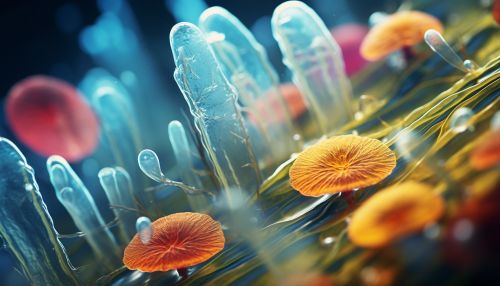Mechanisms of Microbial Bioconversion of Waste to Energy
Introduction
Microbial bioconversion of waste to energy refers to the process by which microorganisms convert organic waste materials into usable forms of energy. This process is a subset of the broader field of bioenergy, which encompasses all forms of energy derived from biological sources. The primary mechanisms of microbial bioconversion involve the metabolic activities of various types of microorganisms, including bacteria, fungi, and algae, which break down organic waste materials and convert them into energy-rich compounds.


Mechanisms of Microbial Bioconversion
The mechanisms of microbial bioconversion can be broadly divided into two categories: anaerobic digestion and fermentation. Both processes involve the breakdown of organic waste materials by microorganisms, but they differ in terms of the types of waste materials they can process, the types of microorganisms involved, and the specific energy-rich compounds they produce.
Anaerobic Digestion
Anaerobic digestion is a process that occurs in the absence of oxygen, where microorganisms break down biodegradable material to produce biogas, a mixture of methane and carbon dioxide. This process is commonly used to treat municipal waste, sewage sludge, and agricultural waste. The biogas produced can be used as a renewable source of energy for heating, electricity generation, and vehicle fuel.
Fermentation
Fermentation, on the other hand, is a metabolic process that converts sugar to acids, gases, or alcohol. It occurs in yeast and bacteria, and also in oxygen-starved muscle cells, as in the case of lactic acid fermentation. The process is used in the production of ethanol from biomass such as corn stover, switchgrass, and sugarcane bagasse.
Factors Influencing Microbial Bioconversion
Several factors influence the efficiency and effectiveness of microbial bioconversion. These include the type and composition of the waste material, the specific microorganisms used, the environmental conditions, and the design of the bioconversion system.
Waste Material
The type and composition of the waste material can significantly influence the efficiency of microbial bioconversion. For example, waste materials with a high content of easily digestible carbohydrates, such as sugars and starches, are generally more suitable for bioconversion than materials with a high content of lignin, which is more difficult for microorganisms to break down.
Microorganisms
The specific microorganisms used in the bioconversion process also play a crucial role. Different types of microorganisms have different metabolic capabilities, and therefore can convert different types of waste materials into different types of energy-rich compounds. For example, certain types of bacteria are particularly effective at breaking down cellulose and hemicellulose, the main components of plant biomass, into simple sugars that can be fermented to produce ethanol.
Environmental Conditions
The environmental conditions, such as temperature, pH, and oxygen availability, can also significantly influence the efficiency of microbial bioconversion. For example, anaerobic digestion typically requires a relatively warm temperature (around 35 to 55 degrees Celsius) and a neutral pH, while fermentation can occur under a wider range of conditions.
Bioconversion System Design
The design of the bioconversion system, including the type of reactor used and the method of waste material preparation, can also impact the efficiency of microbial bioconversion. For example, a well-designed anaerobic digester can optimize the conditions for the microorganisms, thereby maximizing the production of biogas.
Applications of Microbial Bioconversion
Microbial bioconversion has a wide range of applications, from waste management to renewable energy production. It can be used to treat municipal waste, agricultural waste, and industrial waste, thereby reducing the environmental impact of these waste streams. The energy-rich compounds produced through microbial bioconversion, such as biogas and ethanol, can be used as renewable sources of energy for heating, electricity generation, and vehicle fuel.
Future Perspectives
The field of microbial bioconversion is rapidly evolving, with ongoing research aimed at improving the efficiency of the process, expanding the range of waste materials that can be processed, and developing new applications for the energy-rich compounds produced. With the increasing global demand for renewable energy and sustainable waste management solutions, microbial bioconversion is likely to play an increasingly important role in the future.
